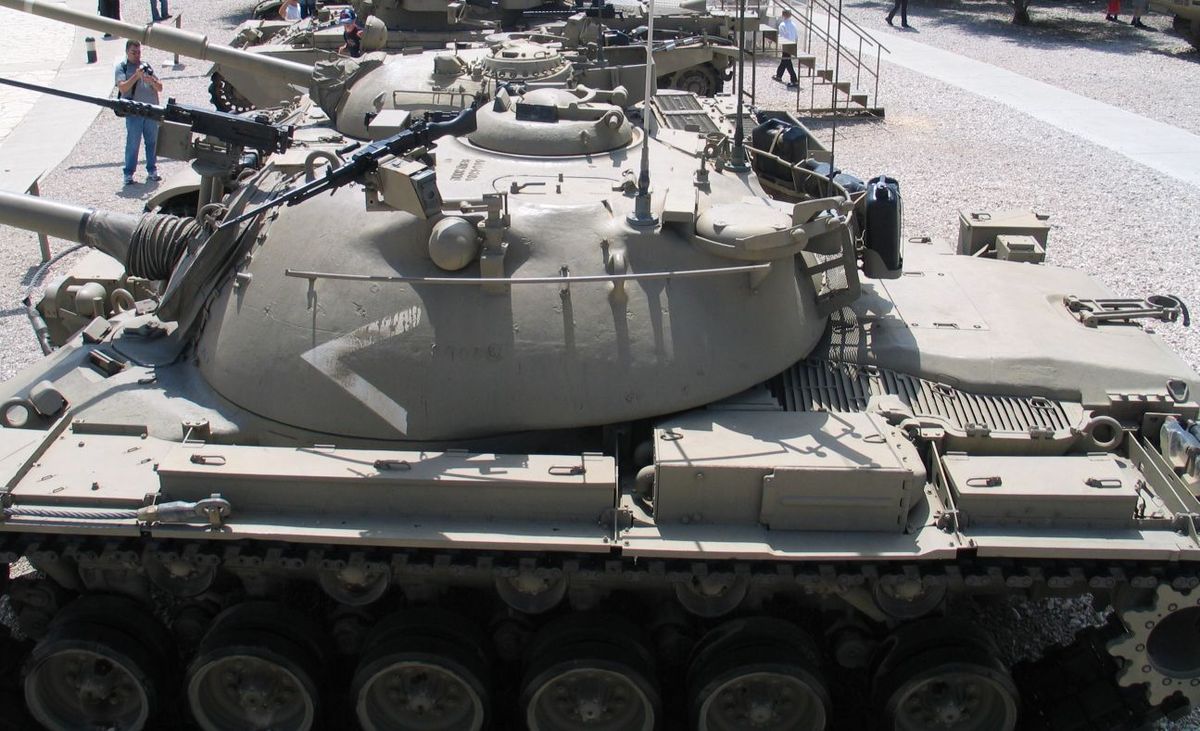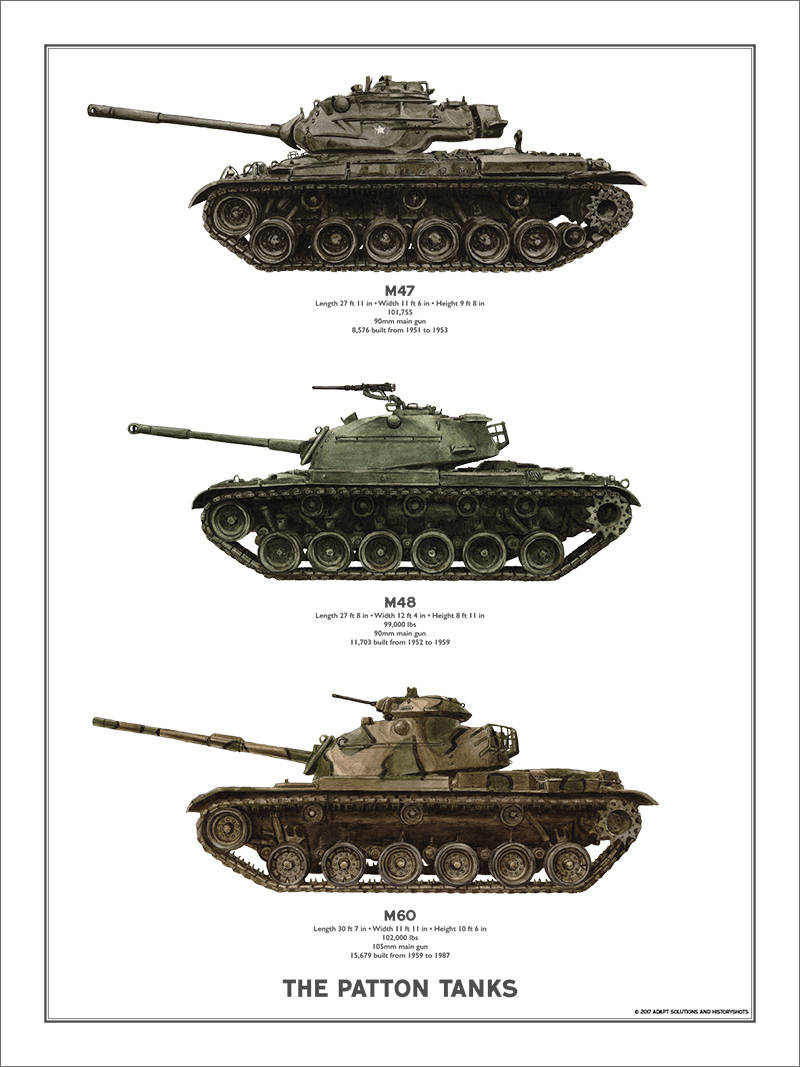M 48 Tanks - Today, modern tanks like the M1 Abrams and the T-14 Armata dominate any discussion of weapons these days. And yet, tanks like the M48 paved the way: After World War II, the United States Army began developing a new medium tank to replace the M26 Pershing and M4 Sherman. The result was the M46, the first tank named after General George S. Paton Jr. - was one of the first American proponents and proponents of the use of tanks to break through enemy lines. Tank evolution proceeded rapidly, leading to the creation of the M47, also named after Patton, but largely seen as static – a fusion of the T42 prototype tank and the M46 chassis.
Even as the M47 went into production, the US military began developing a new design. This led to the introduction of the M48 Patton. However, like earlier American tanks, the M48 was also hastily designed and put into production - in part because the Korean War exposed a severe shortage of modern tanks in the US Army. Despite some "teething problems", the M48 became one of the most widely used tanks in the world.
M 48 Tanks

The M48 vehicle is designed in three parts: the driver's compartment; the fighting room which housed the gunner, gunner and tank commander; and engine room. This design gave the carrier enough space to lift and quickly load bombs. The M48, which had a 90 mm gun, was designed to fight in Europe against Soviet tanks at the beginning of the Cold War period and proved more than practical. Good tank crews in the M48 were reported to be able to put the first unit on target 90 percent of the time, even if it required good cooperation and communication.
M48 Patton Tank At The Israeli Armored Corps Museum At Latrun, Israel Stock Photo
The M48 was also designed with the M48 piece-throwing turret, which provided 120 mm (4.7 in) of armor on the front, but was only 76 mm thick on the sides. However, it was not well formed and could easily be taken out by enemy fire. This was observed during the Indo-Pakistani War of 1965, when Pakistan's M48 Patton tanks suffered heavy losses, especially in actions against the Centurions of the Indian Army. When the United States Army deployed the M48 to Vietnam, many tank crews modified the tank's turret flanks to provide additional protection against the RPG-7 anti-tank rockets used by the People's Army of Vietnam (PAVN).
Despite these problems, the M48, which was in production until the early 1960s, became a staple of the US military. during the Vietnam War, hundreds were sent to Southeast Asia.
The Patton was gradually modified during its service life. The M48A1 version had an improved turret, which allowed the M2HB 12.7 mm machine gun to be operated and loaded from inside the vehicle; while the M48A2 offers improved power and transmission. The upgraded Patton also featured a modified rear plate and improved turret control, as well as an improved range finder and a new ballistic drive and port evacuator for the main gun.
The M48A5 was the first Patton variant to be equipped with the powerful 105mm M68 gun, an American-made version of the British L7 tank gun.
Wallpaper War, Art, Painting, Tank, M48 Patton Images For Desktop, Section оружие
Due to its extensive development, the M48 proved to be one of the most successful tanks built after World War II. Thousands are still in service across the country. Iran has a significant number of upgraded M48 tanks in its inventory, while Greece, Lebanon, Morocco, South Korea, Taiwan, Thailand and Turkey also currently have a significant number of M48 Pattons.
Now editor-in-chief of 1945, Peter Suciu is a Michigan writer who has contributed to more than 40 magazines, newspapers and websites. He writes regularly about military accessories and is the author of several books on military headgear, including the Military Headgear Gallery, available on Amazon.com. Peter is also a contributing writer for Forbes.
Professional Biography: Editor-in-Chief since 1945, Peter Suciu is a Michigan writer who has contributed to more than 40 magazines, newspapers and websites with more than 3,000 published articles over 20 years of journalism. He writes regularly on the military, firearms history, cyber security and international affairs. Peter is also a contributing writer for Forbes. You can follow him on Twitter: @PeterSuciu The M48 Patton is a first-generation American main battle tank (MBT) introduced in February 1952, named as the 90mm Gun Tank: M48. It was designed as a replacement for the M26 Pershing, M4 Sherman, M46 and M47 Patton tanks, and was the main battle tank of the US Army and US Marine Corps in the Vietnam War.

Nearly 12,000 M48s were built, mostly by Chrysler and the American Locomotive Company, from 1952 to 1961. The M48 Patton was the first in the US.
M48 Patton 3d Model
With a crew of four, which replaced the traditional tanks with a crew of 5, a driver's compartment and no machine gun.
As with almost all new armored cars, it had different suspension systems, turrets, aggregates, fenders and other things between the individual tanks.
Early designs, up to the M48A2C, were powered by a gasoline engine. The M48A3 and A5 versions used a diesel engine, however, gasoline engine versions continued to be used in the US. Many examples of the M48 saw military use in the various Arab-Israeli conflicts and the Vietnam War. Beginning in 1959, most US M48A1s and A2s were upgraded to the M48A3 model.
The M48 Patton series saw widespread use in the United States and NATO until it was replaced by the M60 tank and exported. The tank hull also produced a number of prototype, utility and support vehicles such as armored recovery vehicles and bridge decks. Some M48A5 models saw service in the mid-1980s with US Army National Guard units, and M48A3s were used as artillery targets and radar tests in the mid-1990s.
Tim Mee Toys M48 Patton Tank (3 Piece Set)
Many M48s remain in service overseas, although most have been heavily modified and have improved firepower, mobility and protection to increase their combat effectiveness on today's battlefield. As of 2015, Turkey is the largest user with more than 750 units in use, Taiwan is second with around 500 upgraded different units, and Greece is third with 390 in use.
After the end of World War II, the United States Tank-Automotive Armament Command (OTAC) greatly reduced or canceled many tank production and production programs. On November 7, 1950, the Ordnance Technical Committee ordered changes to the names of tanks in the US Army.
It was decided that weight categories (light, medium, heavy) were no longer applicable due to changes in the way tanks were designed and used on the battlefield, and different types of main guns were now available. So the caliber of the gun replaced its weight. For example, the M103 heavy tank was redesigned as the 120mm Gun Tank M103, and the M41 Walker Bulldog light tank as the 76mm Gun Tank M41 Walker Bulldog.

The M47 Patton was produced in 1951 and was used by the United States Army and Marine Corps, but continued technical and design problems prevented it from serving in the Korean War. This forced the US to retire older tank models, such as the M26 Pershing and M46 Patton. In response, the military began several projects to replace the M46 and M26. The United States had a tense moment in the midst of the Korean War crisis, when America seemed to be lagging behind the Soviet Union in terms of tank quality and quantity.
M48 Patton Army Tank On Display Editorial Image
The test and development cycle ran concurrently with production to ensure rapid deployment of the new tanks. This rapid production caused problems, but the importance placed on quickly equipping the army with new tanks precluded extensive testing and testing before production.
Among them are significant projects T42, T69 and T48, as well as the ongoing development of M47.
Compromise was inevitable, but not always accepted, as Gerald Bruce C. Clarke quipped, "We know exactly what we want." We want a car that is fast, nimble, well armored and light. It must be able to swim, cross any surface. , and climb hills with 30 degrees. It must be in the air. It should have a soft but strong gin, requiring little or no maintenance. The operating distance must be several hundred miles. We also want it not to be seen".
The T48 project was to focus on improving the M47 Patton's turret and developing a more powerful but efficient gasoline engine. 1/4 and 1/8 scale turret design models built in May 1950 using the T119 90mm M47 Patton main gun. The design study was accepted by the Army in December, and the Advanced Design and Engineering (APE) contract for the 90mm armored tank was awarded to Chrysler Defse.
File:m 48 Tank. (31267507480).jpg
The hull redesign included moving the pilot port to the forward cter and removing the bow machine gun.
Sig p365 tulster holster, sig p365 iwb holster, sig holsters p365, sig p365 sas holster, sig p365 xl holster, sig p365 hybrid holster, appendix holster sig p365, safariland holster sig p365, sig p365 belt holster, sig p365 holster, sig p365 purse holster, sig sauer p365 holster
0 Comments